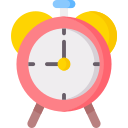Individual Research Report due Wednesday (50% of total grade)
For this assignment—with support through structured tutorial work across much of the semester— you will produce an individually-written report on the broad topic of feeding difficulties in early childhood. Your task is to write a 2000-word report, in the style of a ‘Brief Report’ for a scientific journal (vs. standard research reports where word limits are more often ~6000 words), on a specific question associated with this topic, and addressed with data collected via the PSY3PRP survey study.
You should have already begun thinking about this topic within tutorial classes, working gradually through an Open Science Framework (OSF) pre-registration plan as a guided, structured way to think through elements of the study, whilst data collection has progressed. Discussions have covered:
- Background and rationale and possible research questions (week 4 tutorial)
- Aim/s and directional hypotheses (week 5)
- Our plan for participant sampling and characterisation (weeks 5 & 7)
- The study design and measurement (weeks 7 & 8)
- A logical analysis plan (week 8).
Participant Recruitment
You should also already have contributed to data collection by advertising the study directly to potentially eligible participants in your personal networks, and/or sharing broadly online via social media platforms.
A large sample offers a range of options for possible research questions to be addressed and hypotheses tested. Ultimately we will focus on a small set of specific questions/hypotheses; but exactly what these will be will depend on the data available. The more data, the more straightforward for staff to select a strong set of complimentary options to share with the group. The less data available, the more constraints in what we will have to work with, potentially presenting unforeseen challenges for analysis, difficulty interpreting our findings with confidence, and potentially creating only tenuous links back to the existing literature.
This is a real research project, and as with all research, we will have to do our best with what we achieve. A bit of effort now to ensure a solid participant sample will increase the changes of straightforward data analysis and interpretation—all the better for your report.
As a reminder, you can find and share social media posts by Kristelle Hudry that look like the below, and/or directly share QR codes to a blog post, and directly to the survey, with potentially eligible participants.
Guidelines for Writing your Report
You will have written research reports (i.e., lab reports) in the past for other subjects within your Psychological Science course series, so please feel free revisit detailed instructions, resources, etc. provided there for further guidance.
As a brief reminder, a Research Report is a structured account of a piece of research, including:
Title Page: including clear title and author details
Abstract: providing a short overview of all aspects of what is covered in the report Introduction: contextualising the topic and specific question/gap from the published literature Methods: providing a succinct (but clear and replicable) description of the current study Results: providing a clear account of the study findings, including narrative text and results of
statistical tests to characterise the sample and test hypotheses, often with table/s and/or figure/s
Discussion: offering an interpretation of the findings in context of (specific) proposed hypotheses and (broader) topic, showing insight into study limitations, and proposing logical future direction/s
References: listing all primary sources cited in the report
More detailed guidance on the elements of the report is included in the Marking Rubric (below).
Note: There is no one ‘right answer’ about the question/aim and/or directional hypothesis/es for this report. There are clear constraints around aspects of the study design, participants, procedure, measures and analysis plan, etc. But even so, there is room for slight differences in the question/s posed, aim/s addressed, and/or hypotheses articulated and tested. So don’t worry if your ideas and report aren’t exactly the same as those of other students. Remember, the key goal is to create a logical, internally consistent report of the research project—from introduction, through the method and results, and into the discussion—easily understandable to an informed, out-of-area reader.
The 2000-word limit covers the Introduction, Method, Results and Discussion (not Title Page, Abstract, or Reference List). As enforced in submissions to most scientific, peer-reviewed journals, this word limit should be strictly adhered to (i.e., no +10% leeway). Reports must adhere to APA-7th edition formatting guidelines. In the journal submission process, manuscripts would be returned to the author before going out for peer review, if guidelines like these were not followed. In a student report, markers are instructed to stop reading when the word limit is reached, and the marking rubric includes assessment of APA guidelines on elements of overall report structure and specific formatting details, including for headings, in-text citations, reference list, etc.
Our Academic Assistance: service is all about doing research and being good at it. The more research one will do, the better the paper will turn out.
Expert's Answer
Chat with our Experts
Want to contact us directly? No Problem. We are always here for you

Your future, our responsibilty submit your task on time.
Order NowGet Online
Assignment Help Services






